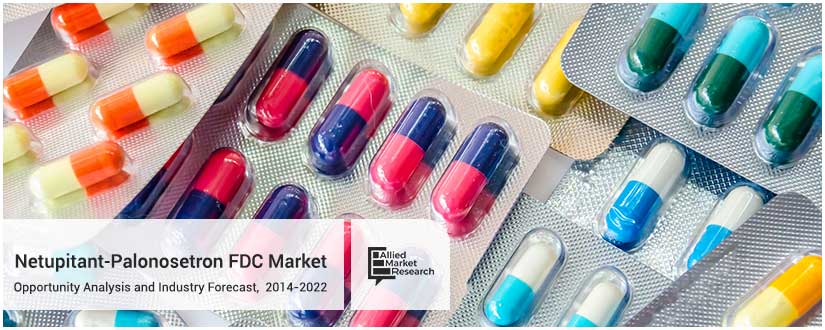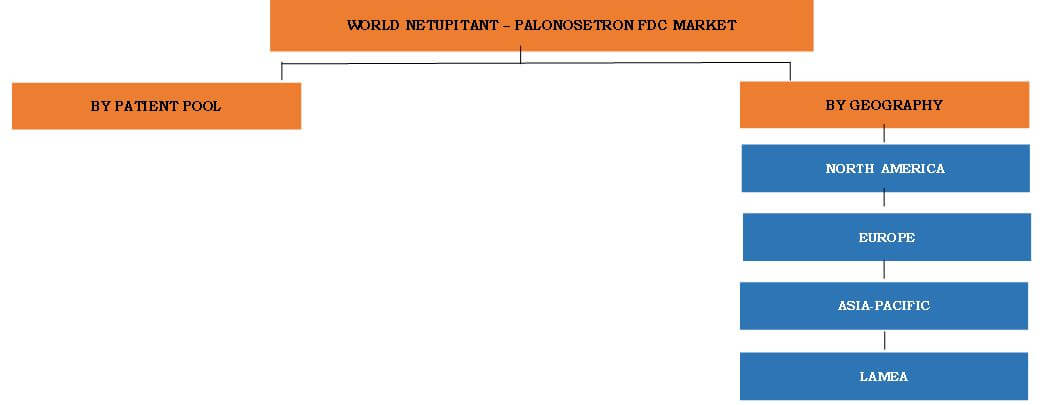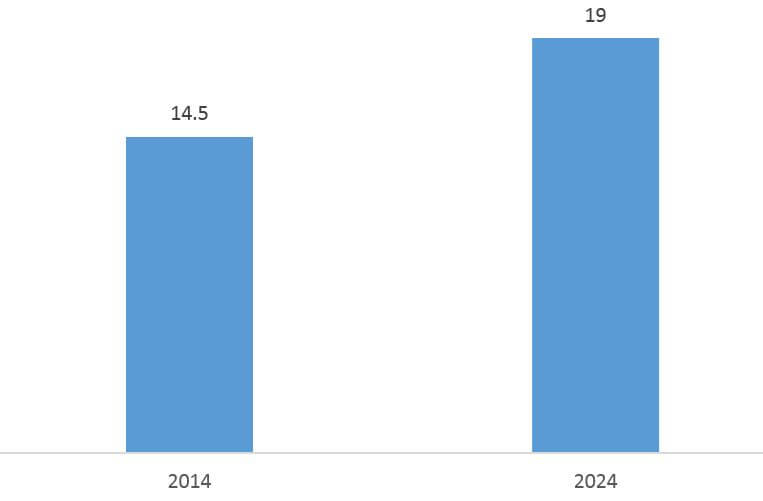Netupitant – Palonosetron FDC Market Overview:
The global netupitant–palonosetron FDC market accounted for $257,162 million in 2015, and is estimated to reach $527,187 million by 2022, growing at a CAGR of 10.8% during the forecast period.
The netupitant-palonosetron FDC is an oral therapy that targets two critical pathways associated with acute and delayed CINV by blockage of P/NK1 receptors. Netupitant in the central nervous system inhibits the binding of endogenous tachykinin neuropeptide substance, which prevents chemotherapy-induced nausea and vomiting (CINV). Moreover, palonosetron helps in the blockage of serotonin at 5-hydroxytryptamine type 3 (5-HT3) receptors and reduces CINV.
Presently, patient pool segment has witnessed large-scale adoption of netupitant-palonosetron FDC drugs due to rise in number of patient undergoing chemotherapy. Moreover, increase in introduction of novel delivery methods to improve patient compliance and the efficacy of combination therapy is accepted to improve by patient pool. Rise in number of patient undergoing chemotherapy and need for higher efficiency drugs for the treatment of cancer patients are expected to drive the growth of the market. However, the current antiemetic efficacy is about 70%-80% in patients treated with highly emetogenic cytotoxic drugs. One of the potential factors that explains this suboptimal response is variability in genes encoding enzymes and proteins, which play a role in metabolism, transport, and receptors related to antiemetic drugs.
The global netupitant-palonosetron FDC market is segmented based on patient pool type and geography. Geographically, the market is analyzed across North America, Europe, Asia-Pacific, and LAMEA. Furthermore, the report covers the strategies adopted by key market players to sustain competitive environment and increase their market share.
Global Netupitant-Palonosetron FDC Market Segmentation
Segment Review
The global netupitant-palonosetron FDC market by patient pool is not further bifurcated currently. Netupitant-palonosetron FDC segment generates the highest revenue owing to increase in patients who suffer from CINV.
Top Impacting Factors
The significant impacting factors include growth in number of patients who undergo chemotherapy and introduction of novel drug delivery methods to improve patient compliance, and improvements in control of nausea and vomiting due to chemotherapy. Along with these factors, the market is influenced by the advancements in technology to discover new high-potential FDC drugs that enhance R&D efforts to discover antiemetic therapy. The abovementioned factors collectively create opportunities for the market growth, while factor such as high price of CINV drugs restrain the growth of the market. However, each factor is expected to have its definite impact on the market during the forecast period.
Growth in number of patients who undergo chemotherapy
Number of people living with cancer reached nearly 14.5 million in 2014, and is expected to rise to 19 million by 2024-approximately 31% increment. Of all the new cases recorded globally, approximately 60% of the cases are identified from Asia, Africa, and the Americas.
Cancer population, 2014 versus 2024
Introduction of novel drug delivery methods to improve patient compliance
The needle-free, painless, and cost-effective transdermal drug delivery system is expected to witness increased demand in the global market. This system is inexpensive as compared with other therapies. Novel methods such as patches having multiple dosing and variable drug delivery rate are designed to deliver drugs to improve patient compliance.
Advancement in technology to discover new high-potential FDC drug
Companies seek technological advancement to lower production cost and to discover new products. For instance, new drug named rolapitant (Varubi) is developed using new technology by Tesaro, a healthcare-based company. It is the company's first product under CINV drugs segment, which gained significant traction in the netupitant–palonosetron FDC drug market.
Approval of new drugs provides cancer patients with effective treatment for prevention of delayed phase of nausea and vomiting caused by chemotherapy. This is attributed to increase the demand for netupitant–palonosetron FDC drugs during the forecast period.
Geographically, North America was the dominant regional market for netupitant–palonosetron FDC drugs, in terms of revenue, due to growth in incidence of CINV among patients. These drugs are expected to have significant impact on the revenue of the overall market. Approval of new drugs such as rolapitant and Sustol (APF-530) is expected to boost the growth of the CINV drugs in the US market during the forecast period. Europe was the second largest regional market for netupitant–palonosetron FDC drugs, in terms of revenue, due to growth in demand for netupitant–palonosetron FDC drugs among patients.
Acacia Pharma, Helsinn Holding S.A., Heron Therapeutics, Inc., and Eisai Pharmaceutical Pvt Ltd. are some of the major players discussed in the report.
KEY BENEFITS FOR STAKEHOLDERS
- This report provides an extensive analysis of the current & emerging market trends and dynamics in the global netupitant–palonosetron FDC market.
- This report entails the detailed quantitative analysis of the current trends and future estimations from 2014 to 2022, which assists to identify the prevailing market opportunities.
- This study evaluates competitive landscape and value chain to understand the competitive environment across the geographies.
- Comprehensive analysis of factors that drive and restrict the growth of the market is provided.
NETUPITANT-PALONOSETRON FDC MARKET KEY SEGMENTS
BY PATIENT POOL
BY GEOGRAPHY
- North America
- Europe
- Asia-Pacific
- LAMEA
Loading Table Of Content...





